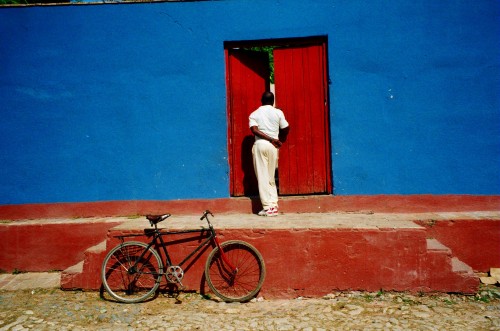Whether to use dialect in memoir and fiction writing, how much to use, and in what way to use it — these issues come up often in my work as an editor. Students in my courses and workshops, many of them from parts of Canada that feature local dialects, or from other English-speaking countries or with family histories that reach beyond Canada’s borders, ask about it too. Here, author Lisa Allen-Agostini, guest speaker for my writers’ retreat in Grenada last April, shares her experience and thoughts on this topic.
. . . You ever look up from some lonely beach
and see a far schooner? Well, when I write
this poem, each phrase go be soaked in salt;
I go draw and knot every line as tight
as ropes in this rigging; in simple speech
my common language go be the wind,
my pages the sails of the schooner Flight . . .
— Derek Walcott, The Schooner Flight: 1. Adios, Carenage
I write a weekly column in a national newspaper, the Trinidad and Tobago Guardian. For about four years, I wrote it almost entirely in Trinidad Creole.
It was both an experiment and a unique selling proposition: first, I wanted to prove that complex social and political analysis could be accomplished in Trinidad Creole and, second, I wanted to differentiate my column from the dozens of others in local papers.
Among newspaper columnists in Trinidad and Tobago, Creole was and is still largely used for dramatic effect, as an insertion in a Standard English argument. Where a column is written in Creole it is usually for comic effect. This wasn’t what I wanted to do. I figured that all over the country people were conducting business, discussing their lives and analyzing politics and government in our Creole. Why not use it as a legitimate, serious medium?
The reactions I got were mixed. Some people loved it. Nationals living abroad loved it especially, as it reminded them of home and our heritage.
Others hated it. They felt that by putting Creole into the newspaper I was legitimizing “bad English” or the use of an inappropriate language in the public sphere. By using Creole in a national column, they said, I was giving it a stamp of approval, and sending confusing messages especially to students who were and still are expected to write and speak in Standard English, and who are penalized for using the Creole in school.
Personally I find Trinidadian Creole to be a lovely language, one with a wide range and a poetry I enjoy. Words like obzocky and tabanca and tootoolbay have Standard English equivalents but these don’t quite encompass the nuance of the Trinidadian Creole words.
Similarly, regional dialects all over the world deviate from Standard English to a greater or lesser degree. When a writer decides to use a regional dialect in her writing, she may face the same challenges I did.
So why use Creole, or any other regional dialect?
Anthropological authenticity
Most people in the region speak Creole in their day-to-day lives. Even members of the social classes we would expect to use only Standard English speak some Creole. To have a Caribbean character that speaks no Creole at all seems to me disingenuous.
Likewise, if your story is set in a region with a particular dialect or features a social group known for speaking a particular dialect, it is probably a good idea to consider whether — or how — you need to represent that in the writing.
Characterization
Writers build characters mainly through showing what they do and what they say. Allowing a character to speak Creole or a regional dialect may just be a natural choice, depending on who the character is.
Art
The rhythms of Creole are different from Standard English (or French or Dutch or Spanish). These cadences and nuances make Creole or a regional dialect almost a different tool from Standard English in your kit as a writer. The same can be said of regional dialects, to a certain degree.
Writers not from the region use Caribbean Creoles from time to time. Neil Gaiman did it in his novel Anansi Boys (even the title is Creole! Anansi here is possessive, even though it doesn’t have the Standard English apostrophe + s). Nalo Hopkinson, a Caribbean writer, acted as a kind of cultural/ language consultant on the book. You could follow Gaiman’s example and find a similarly knowledgeable person to help you if you want to use regional dialect in your writing.
 And as you write, keep in mind the following characteristics of Creole, which apply as well to most other regional dialects:
And as you write, keep in mind the following characteristics of Creole, which apply as well to most other regional dialects:
Creole has rules of grammar and usage. It’s not just a “broken” version of the mother tongue, but may draw its rules from different languages.There is no single “Caribbean” Creole. Each region may have its own unique usage, grammar, and vocabulary. Some people try to mix them up for a generic “Caribbean” voice but, unless you want to try to make a new language, it might be better to stick to the Creole you know best.
Even within one Caribbean territory, there may be variations between geographical groups, between races, between classes and occupations. I wouldn’t expect an urban character to speak the same as a rural character, or an old one the same as a young one. Additionally, a single character might practice code switching, depending on whom she is talking to, or where she is.
Creole can be read as light or humorous, just because it has often been used for comic effect in the past. It needn’t be. Be careful your writing doesn’t inadvertently come across as comedy.
Because Creoles are usually spoken, not written languages, the etymologies are not as formalized as Standard English. One might see “the” written as de to signify Creole. One might also, as in the Walcott excerpt above, only be able identify the writing as Creole because of its grammar. I prefer to use Standard English spellings for Creole, just because it’s easier to write and easier to read, but that’s a personal choice. There is no industry standard on this topic so it’s basically up to the writer and her publisher to decide how to represent the Creole on the page.
As with any new language, learning to use dialect effectively takes practice. Reflect on your reasons for incorporating it — anthropological authenticity, characterization, and/or art — and ensure that any dialect enhances, rather than gets in the way of, an effortless and meaningful experience for your readers.
♦ ♦ ♦
LISA ALLEN-AGOSTINI is a Trinidadian writer and journalist. She was the inaugural Dame Hilda Bynoe Writer in Residence at St. George’s University, Grenada (2014), co-editor of Trinidad Noir (Akashic Books, 2008), and author of The Chalice Project (Macmillan Caribbean, 2008). A freelance journalist, she has written and edited for the Trinidad & Tobago Guardian and the Trinidad Express and continues to write for Caribbean Beat magazine, the Caribbean Review of Books and other publications. She was shortlisted for the Hollick-Arvon Prize for Caribbean Writing in 2013.
Lisa was guest speaker for my second Spice Isle Writing & Yoga retreat in Grenada, April 2014.
For more on using dialect in writing, especially in a North American context, see “The Uses and Abuses of Dialect: Y’All Be Sayin’ Wha’?” by Lori L. Lake.


Lisa,
Your post about dialect is informative. I believe your statement below is an excellent guiding principle for deciding about dialect usage: “Reflect on your reasons for incorporating it — anthropological authenticity, characterization, and/or art — and ensure that any dialect enhances, rather than gets in the way of, an effortless and meaningful experience for your readers.”
In a blog post about Barbara Lalla’s novel Cascade, I wrote: In the beginning, the challenge to understand the accented speech of some Jamaican characters, especially the underprivileged and uneducated slowed my reading pace. But Barbara Lalla knew when to pull back, using these characters primarily to illustrate important developments, or to illuminate backstory, or show the personalities of major characters. (http://maryemcintyre.wordpress.com/2011/01/02/cascade-a-novel-book-review-by-mary-e-mcintyre)
In a blog post about Austin Clarke’s novel The Polished Hoe, I wrote: The book has moments of repetition that might well have been left out. But the Bajan-Creole language is beautiful, not overdone as it might have been. (http://maryemcintyre.wordpress.com/2011/04/09/the-polished-hoe-by-austin-clarke)
Another book I recall reading, award winning Esi Edugyan’s Half-Blood Blues, uses dialect that, at first, seemed difficult to master. However, the consistency of the presentation of the dialect became familiar to the reader’s “ear.” It brought richness to the characters that would be missing without it. (http://maryemcintyre.wordpress.com/2012/05/10/half-blood-blues-by-esi-edugyan)
My father, born in England, used a word, “bockety,” which referred to any wheeled vehicle that was out of alignment or defective. Recently I wrote about a buggy found on a rubbish heap and the only word that fully described the ambulation was “bockety wheels.” Does it work? I don’t know, but it expressed something to me that I’d grown up hearing. I know slang is different from dialect, but I’m sure Brits reading the word would immediately connect with its meaning.
Thanks for your thoughtful comment, Mary, and these great examples. I edited both “The Polished Hoe” and “Cascade,” among other novels and memoirs rich in dialect, so I’m conscious that its effective use is significant to writers, editors, and ultimately readers. Btw, I love the word “bockety.” You’re right: it’s perfect.
Great piece by Lisa Allen-Agostini. I’ve always liked Derek Walcott’s poetry and know Jamaican patois teaching years ago (Miss Lou was the literary personification of it in Toronto for years). Tessa of Santiago Writers hails from Guyana and will occasionally use it.